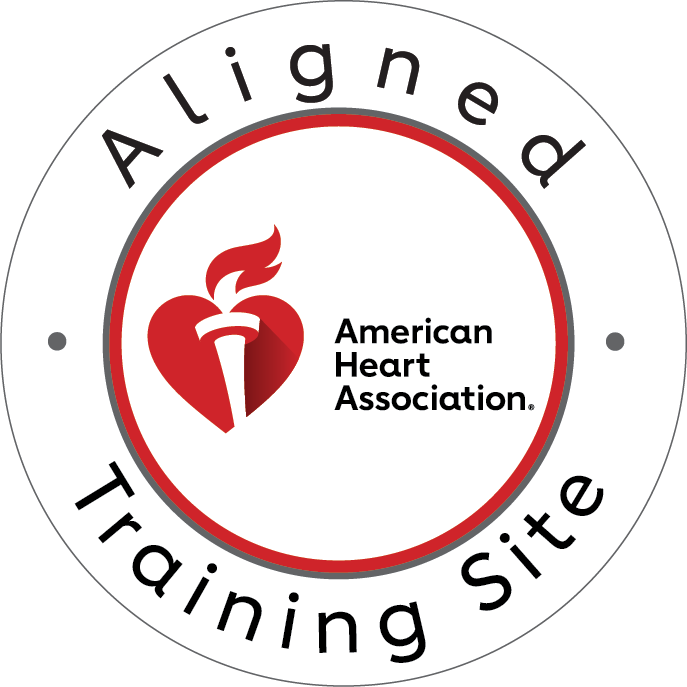Part I: Introduction
Cardiac emergencies strike without warning, often leaving individuals in a state of panic and uncertainty. In these critical moments, the ability to perform Cardiopulmonary Resuscitation (CPR) can mean the difference between life and death. CPR is a vital emergency procedure that combines chest compressions and rescue breaths to maintain blood flow and oxygenation to the brain and vital organs when someone’s heart has stopped beating.
Every year, countless lives are saved thanks to the swift actions of individuals trained in CPR. However, despite its proven efficacy, many people remain untrained in this life-saving technique. This article explores the paramount importance of CPR training and certification in equipping individuals with the skills and confidence to respond effectively during cardiac emergencies.
Understanding CPR Training
CPR training goes beyond theoretical knowledge; it is a hands-on learning experience designed to prepare individuals to act decisively in crises. Training programs typically cover essential topics such as recognizing cardiac arrest, performing chest compressions, delivering rescue breaths, and utilizing automated external defibrillators (AEDs). Through simulated scenarios and practical exercises, participants gain proficiency in assessing the situation, initiating CPR, and coordinating with emergency medical services.
Objectives of CPR Training
The primary goal of CPR training is to empower individuals to become confident and competent responders in emergencies. By teaching the fundamentals of CPR, training programs aim to:
- Provide participants with the knowledge and skills necessary to recognize cardiac arrest and initiate immediate action.
- Instill confidence in responders, enabling them to remain calm and focused under pressure.
- Promote teamwork and effective communication among responders to optimize patient outcomes.
- Increase awareness of the importance of early CPR and defibrillation in improving survival rates.
- Encourage a culture of preparedness within communities, workplaces, and educational institutions.
Importance of Hands-on Practice
Hands-on practice is a cornerstone of effective CPR training, allowing participants to develop muscle memory and proficiency in performing chest compressions and rescue breaths. Simulation exercises provide realistic scenarios that mimic the stress and urgency of real-life emergencies, preparing responders to react swiftly and confidently when every second counts. Through repeated practice, individuals enhance their skills and readiness to intervene in cardiac emergencies, ultimately increasing the likelihood of positive outcomes for victims.
Part II: Benefits of CPR Training and Certification
Cardiopulmonary Resuscitation (CPR) training and certification offer numerous benefits that extend far beyond the individual learner. From empowering individuals to saving lives and reducing mortality rates, the impact of CPR education reverberates throughout communities and healthcare systems.
Empowerment Through Knowledge and Skills
One of the most significant benefits of CPR training is the empowerment it provides to individuals. By equipping learners with the knowledge and skills to respond effectively during cardiac emergencies, CPR training instills a sense of confidence and readiness to act when faced with a life-threatening situation. Whether in the home, workplace, or public setting, individuals trained in CPR become empowered bystanders capable of making a meaningful difference in the outcome of a cardiac arrest.
Confidence in Crisis Situations
Confidence is a crucial factor in effective crisis response, and CPR certification plays a pivotal role in boosting confidence among responders. Through hands-on practice and scenario-based training, participants gain the experience and assurance necessary to remain composed and take decisive action when every second counts. This confidence not only benefits the victim but also reassures bystanders and onlookers, creating a sense of trust and stability in chaotic situations.
Saving Lives Through Timely Intervention
Perhaps the most compelling reason to pursue CPR training and certification is the potential to save lives. Every year, thousands of lives are saved thanks to the prompt initiation of CPR by bystanders. In cardiac arrest cases, the chances of survival decrease by 7-10% for every minute without intervention. By promptly recognizing cardiac arrest, initiating CPR, and activating the emergency response system, trained individuals can significantly improve the chances of survival for the victim.
Reducing Mortality Rates
Numerous studies have demonstrated a direct correlation between CPR training and decreased mortality rates from cardiac arrest. Communities with higher rates of CPR-trained individuals tend to have better survival outcomes for cardiac arrest victims. By increasing the prevalence of CPR-trained individuals across all segments of society, we can collectively contribute to reducing mortality rates and improving public health outcomes.
Part III: Access to CPR Training
Access to comprehensive CPR training programs is essential to ensure that individuals from all walks of life have the opportunity to acquire life-saving skills. Whether in urban centers or rural communities, access to CPR training can mean the difference between life and death for cardiac arrest victims. In this section, we will explore the various avenues through which individuals can access CPR training and certification.
Availability of CPR Training Programs
CPR training programs are offered in a variety of settings to accommodate diverse learner needs. From traditional classroom-based courses to online learning platforms, individuals can choose the format that best fits their schedule and preferences. CPR training is commonly available through:
- Healthcare institutions: Hospitals, clinics, and medical schools often offer CPR certification courses for healthcare professionals and members of the public.
- Community organizations: Organizations such as the American Red Cross, the American Heart Association, and local fire departments frequently host CPR training sessions for community members.
- Educational institutions: Schools, colleges, and universities may incorporate CPR training into their curriculum or offer standalone courses for students and staff.
- Workplace initiatives: Many employers recognize the importance of CPR training and provide certification opportunities for their employees as part of workplace safety initiatives.
Online CPR Certification
In recent years, online CPR certification has become increasingly popular due to its convenience and flexibility. Online courses allow individuals to complete CPR training at their own pace and from the comfort of their own homes. These programs typically include interactive modules, video demonstrations, and assessments to ensure learners acquire the necessary knowledge and skills. While online CPR certification provides a convenient option for busy individuals, it’s essential to choose accredited courses that meet recognized standards for CPR education.
Importance of Accreditation
When seeking CPR training, it’s crucial to prioritize accredited programs that adhere to established guidelines and standards. Accreditation ensures that the training meets quality benchmarks set by reputable organizations such as the American Heart Association or the American Red Cross. Accredited CPR courses provide comprehensive instruction, hands-on practice opportunities, and certification recognized by employers and regulatory bodies. By choosing accredited training programs, individuals can be confident in the quality and reliability of their CPR education.
Part IV: CPR Training for Healthcare Professionals
CPR training is not only essential for laypersons but also mandatory for healthcare professionals who are often the first responders in cardiac emergencies. In this section, we will examine the specific CPR training requirements for healthcare professionals and the advanced techniques and skills necessary for providing high-quality CPR in clinical settings.
Mandates for CPR Certification
Healthcare providers, including doctors, nurses, paramedics, and emergency medical technicians (EMTs), are typically required to maintain current CPR certification as part of their professional licensure and credentialing requirements. Regulatory bodies and professional organizations mandate CPR certification to ensure that healthcare professionals possess the necessary skills to respond effectively to cardiac emergencies and provide life-saving interventions as part of their clinical practice.
Advanced CPR Techniques
Healthcare professionals undergo specialized CPR training that goes beyond the basic techniques taught in standard CPR courses. Advanced CPR techniques may include:
- Advanced airway management: Healthcare providers are trained to establish and manage advanced airways, such as endotracheal tubes and supraglottic airway devices, to optimize oxygenation and ventilation during CPR.
- Intravenous (IV) access and medication administration: Healthcare professionals may administer medications and fluids via IV access to support circulation and cardiac function during resuscitation efforts.
- Team dynamics and coordination: In clinical settings, CPR often involves a team-based approach with multiple healthcare providers working together to deliver high-quality care. Training emphasizes effective communication, leadership, and coordination among team members to optimize patient outcomes.
Continuous Education and Recertification
CPR training is not a one-time event but rather an ongoing process that requires regular education and recertification to maintain proficiency and stay abreast of advances in resuscitation science. Healthcare professionals are typically required to renew their CPR certification every one to two years, depending on institutional policies and regulatory requirements. Recertification courses provide updates on current guidelines, reinforce essential skills, and offer opportunities for hands-on practice and simulation-based training to ensure readiness in real-world clinical scenarios.
By prioritizing CPR training and certification for healthcare professionals, healthcare organizations can enhance patient safety, improve clinical outcomes, and uphold the highest standards of care delivery. In the next section, we will shift our focus to the importance of CPR training for non-medical professionals and the broader societal impact of widespread CPR education initiatives.
Part V: CPR Training for Non-Medical Professionals
While CPR training is integral to the practice of healthcare professionals, its importance extends beyond the medical field to encompass individuals from all walks of life. In this section, we will explore the significance of CPR training for non-medical professionals and the essential skills and knowledge they gain through certification.
Importance of CPR Training for Laypersons
Cardiac arrest can occur anywhere, at any time, often in settings where immediate medical assistance is not readily available. As such, CPR training for laypersons plays a crucial role in bridging the gap between the onset of cardiac arrest and the arrival of professional medical help. By empowering non-medical individuals with CPR skills, we can significantly increase the chances of survival for cardiac arrest victims in the community.
Basic CPR Techniques and Skills
CPR training for non-medical professionals typically focuses on teaching basic life support skills that are easy to learn and apply in emergency situations. These skills may include:
- Hands-only CPR: Non-medical individuals are trained to perform chest compressions without rescue breaths, simplifying the process and increasing the likelihood of bystander intervention.
- Automated External Defibrillator (AED) use: Training programs often include instruction on how to recognize cardiac arrest, activate emergency services, and operate AEDs to deliver lifesaving shocks to restore normal heart rhythm.
- Recognition of cardiac arrest signs: Participants learn to recognize common signs and symptoms of cardiac arrest, such as sudden loss of consciousness, absence of breathing, and absence of pulse, enabling prompt initiation of CPR.
Empowering Communities Through CPR Training
Community-wide CPR training initiatives have the power to transform bystanders into lifesavers, creating a network of trained responders capable of intervening in cardiac emergencies wherever they occur. By disseminating CPR education across diverse communities, we can empower individuals to take action, save lives, and build a culture of preparedness and resilience.
Encouraging Participation in CPR Training
Encouraging participation in CPR training requires raising awareness of its importance and addressing common barriers to access. Outreach efforts may include:
- Public awareness campaigns: Educational initiatives and media campaigns can raise awareness of the importance of CPR training and encourage community members to seek certification.
- Community partnerships: Collaborating with local organizations, schools, businesses, and community centers can expand the reach of CPR training programs and make them more accessible to diverse populations.
- Incentives and subsidies: Offering incentives such as discounted or free CPR training, subsidies for certification fees, or recognition programs for trained individuals can incentivize participation and remove financial barriers to access.
By promoting CPR training for non-medical professionals, we can create safer, more resilient communities where individuals are prepared and empowered to respond effectively to cardiac emergencies. In the following section, we will explore the role of businesses in promoting CPR education among employees and fostering a culture of safety and preparedness in the workplace.
Part VI: CPR Training as a Corporate Responsibility
Beyond individual empowerment, CPR training holds significant value for businesses and organizations as part of their broader commitment to workplace safety and employee well-being. In this section, we will examine the importance of CPR training in the workplace, the benefits of corporate CPR initiatives, and strategies for implementing effective training programs.
Prioritizing Employee Safety
Employee safety is paramount in any workplace environment, and CPR training plays a critical role in preparing employees to respond effectively to medical emergencies that may occur on the job. By providing CPR training to employees, businesses demonstrate a commitment to safeguarding the health and well-being of their workforce and creating a culture of safety and preparedness.
Enhancing Workplace Preparedness
Medical emergencies can occur unexpectedly in any workplace setting, from offices and factories to retail stores and construction sites. By equipping employees with CPR skills and knowledge, businesses enhance workplace preparedness and empower staff to respond confidently and effectively in emergency situations. Prompt initiation of CPR can buy precious time until professional medical help arrives, potentially saving lives in the process.
Building Employee Confidence
Participation in CPR training can boost employee confidence and morale by providing them with valuable life-saving skills that extend beyond the workplace. Employees who feel confident in their ability to respond to medical emergencies are more likely to take proactive measures to ensure workplace safety and support their colleagues in times of need.
Creating a Safer Work Environment
Implementing CPR training programs fosters a culture of safety and preparedness in the workplace, where employees are encouraged to take an active role in maintaining a safe and healthy work environment. By promoting CPR education and encouraging participation in training initiatives, businesses create a safer workplace for employees, customers, and visitors alike.
Strategies for Implementing CPR Training Programs
Effective implementation of CPR training programs requires careful planning and coordination to ensure maximum participation and impact. Strategies for businesses may include:
- Integration into existing training programs: Incorporating CPR training into existing workplace safety or first aid training programs can streamline implementation and maximize employee participation.
- On-site training sessions: Hosting on-site CPR training sessions conducted by certified instructors can make training more convenient and accessible for employees, minimizing disruptions to work schedules.
- Incentives and recognition: Offering incentives such as certification bonuses, recognition programs for trained employees, or rewards for CPR champions can motivate participation and reinforce the importance of CPR education.
- Ongoing education and refresher courses: Providing opportunities for employees to refresh their CPR skills through periodic training and recertification ensures that staff remain prepared to respond effectively to emergencies over time.
By prioritizing CPR training as a corporate responsibility, businesses can play a vital role in promoting workplace safety, enhancing employee well-being, and contributing to healthier, more resilient communities. In the final section of this article, we will summarize the key takeaways and emphasize the collective impact of widespread CPR education initiatives in saving lives and building stronger, more prepared societies.
Part VII: Overcoming Barriers to CPR Training
Despite the undeniable importance of CPR training, several barriers may prevent individuals from seeking certification.
Addressing Misconceptions about CPR
Misconceptions about CPR can deter individuals from seeking training or taking action in emergencies. Common myths include concerns about legal liability, fear of causing harm, or beliefs that CPR is too complicated for non-medical professionals. By debunking these myths and providing accurate information about the simplicity and effectiveness of CPR, we can encourage more people to pursue training and feel confident in their ability to respond in emergencies.
Accessibility of CPR Training
Accessibility is another significant barrier to CPR training, particularly for underserved communities or individuals with limited resources. Factors such as cost, location, and scheduling constraints may prevent individuals from accessing training programs. To address these barriers, initiatives such as community-based training events, subsidized certification programs, and online training options can increase the accessibility of CPR education and ensure that everyone has the opportunity to acquire life-saving skills.
Importance of Cultural Competence
Cultural competence is essential in CPR education to ensure that training programs are inclusive and culturally sensitive. Cultural beliefs, language barriers, and perceptions of healthcare may influence individuals’ willingness to participate in CPR training. By tailoring training materials, incorporating diverse perspectives, and engaging community leaders, CPR educators can create culturally competent programs that resonate with a diverse range of learners and promote greater inclusivity in CPR education initiatives.
Collaborative Solutions
Overcoming barriers to CPR training requires collaborative efforts from healthcare organizations, community leaders, educators, and policymakers. By working together to address misconceptions, improve accessibility, and promote cultural competence in CPR education, we can break down barriers and empower individuals from all backgrounds to acquire life-saving skills. Through partnerships, advocacy, and community engagement, we can create a more inclusive and prepared society where everyone has the knowledge and confidence to respond effectively in emergencies.
Part VIII: Conclusion
In conclusion, the importance of CPR training and certification, particularly in Louisville, cannot be overstated. CPR Louisville serves as an American Heart Association training site, offering a comprehensive range of courses including initial certifications and renewals in BLS for Healthcare Providers, ACLS, PALS, CPR, and First Aid. With stress-free and hands-on classes, CPR Louisville ensures that individuals are equipped with the knowledge and skills necessary to respond effectively in emergencies. By promoting widespread CPR education initiatives and addressing barriers to access, we can ensure that everyone in Louisville has the opportunity to acquire life-saving skills and contribute to building a safer, more resilient community. Let us continue to prioritize CPR training and certification, making Louisville a beacon of preparedness and safety for all.
CPR training provides individuals with the knowledge, skills, and confidence to respond effectively to cardiac emergencies, increasing the chances of survival for victims and improving overall outcomes. Whether in healthcare settings, workplaces, or communities, CPR-trained individuals play a critical role in bridging the gap between the onset of cardiac arrest and the arrival of professional medical help.
Moreover, CPR training goes beyond the individual level to encompass broader societal benefits, including reduced mortality rates, increased community resilience, and a culture of safety and preparedness. By promoting widespread CPR education initiatives and addressing barriers to access, we can ensure that everyone has the opportunity to acquire life-saving skills and contribute to building a safer, more resilient world.




